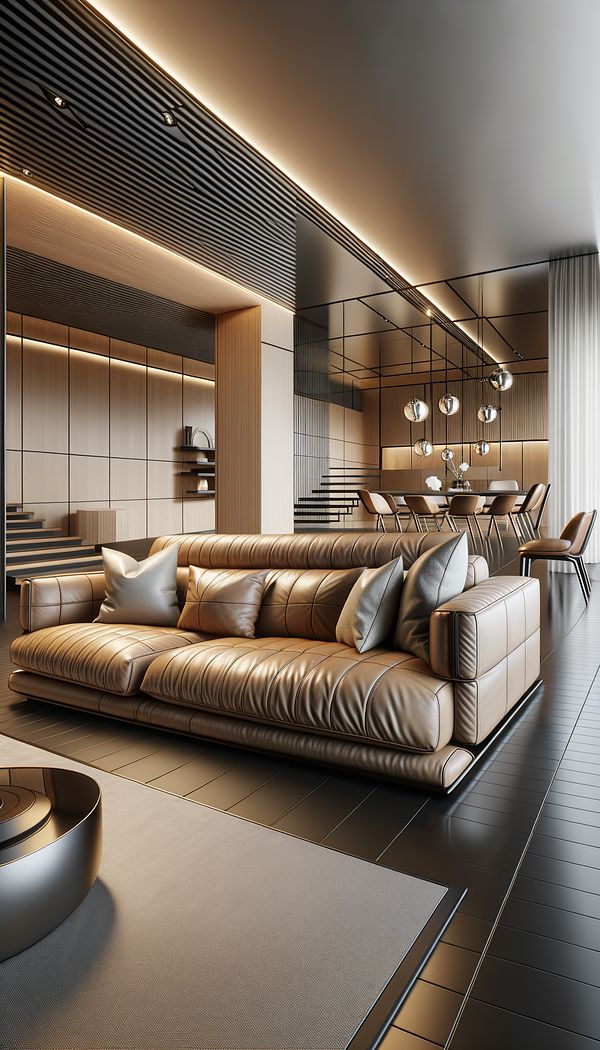What is Corrected Grain Leather?
Corrected grain leather is a type of leather that has been sanded, buffed, or processed to minimize imperfections.
Description
Corrected grain leather, often found in upholstery and other interior design applications, is a variety of leather that has undergone a significant alteration process to enhance its appearance and uniformity. This leather type begins as genuine leather but is then sanded or buffed to remove imperfections such as scars, insect bites, and wrinkles. The surface is subsequently imprinted with an artificial grain to give it a more consistent texture. Sometimes, corrected grain leather is also coated with stains or dyes to achieve a more uniform color.
The primary advantage of using corrected grain leather in interior design is its uniformity and durability. The corrections made during its processing ensure that the leather has a consistent appearance throughout, making it an excellent choice for large projects or pieces where consistency is key. Additionally, the surface treatments not only disguise imperfections but also can add a layer of protection, making corrected grain leather more resistant to wear and aging.
However, it's important to note that while corrected grain leather may be more uniform and durable, it may not have the same depth of character or natural feel as full-grain or top-grain leather. For some design aesthetics, this lack of natural variation and texture might be seen as a drawback.
Usage
Corrected grain leather is commonly used in the manufacture of furniture, particularly sofas and chairs, due to its durability and uniform appearance. It is also popular in car interiors and other settings where a consistent, polished look is desired.
FAQs
-
How is corrected grain leather different from full-grain leather?
Corrected grain leather differs from full-grain leather in that it has been sanded or buffed to remove imperfections and has an artificial grain stamped onto its surface, whereas full-grain leather retains its natural surface, including any imperfections and the original grain pattern.
-
Can corrected grain leather be dyed?
Yes, corrected grain leather is often dyed or stained during its finishing process to achieve a more consistent color across the material.
-
Is corrected grain leather considered high quality?
Corrected grain leather is considered to be of moderate quality. It is more uniform and durable than lower-quality leathers, but it lacks the natural character and premium feel of higher-quality leathers like full-grain or top-grain leather.
Practical Application
When selecting corrected grain leather for interior design projects, consider both the aesthetic and functional needs of the space. Due to its uniform appearance and durability, it is an excellent choice for pieces that will see frequent use or where consistency is crucial. However, for designs that prioritise natural beauty and texture, explore other types of leather.
-
Concept StatementA concept statement articulates the vision and overarching theme for an interior design project.
-
Back OrderA back order is an order for an item that is temporarily out of stock.
-
Trumpet LegA trumpet leg is a type of furniture leg, characterized by its flared shape that resembles a trumpet.
-
Drop Lid DeskA drop lid desk is a type of desk featuring a hinged writing surface or lid that can be opened or closed.
-
BaroqueBaroque is a highly decorative and theatrical style of architecture, art, and design that originated in the early 17th century in Europe.
